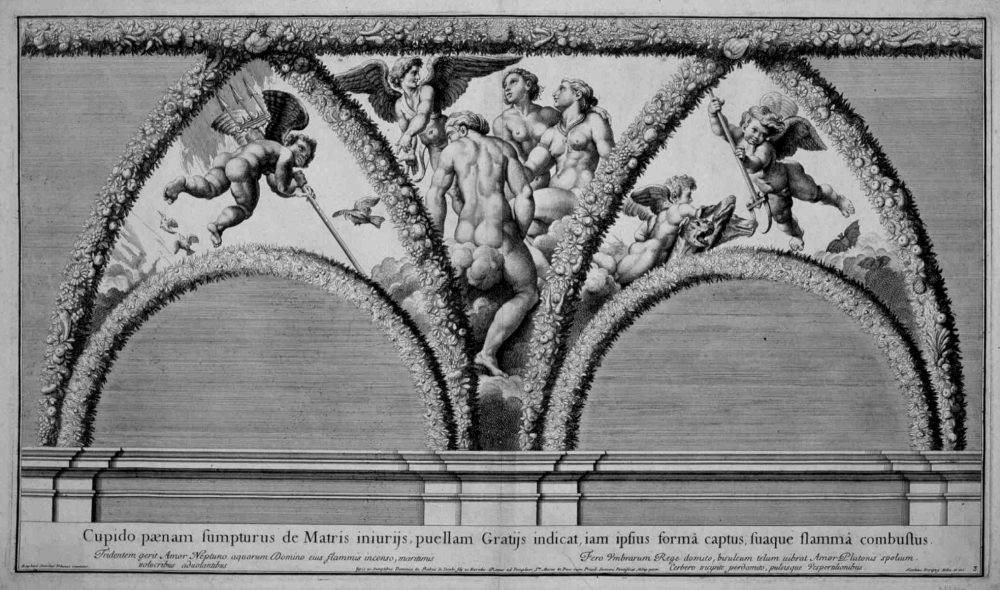
© Universitaire Bibliotheken Leiden, http://hdl.handle.net/1887.1/item:1630906
After a brief introduction to guide the reader into the narrative, the actual treatise begins. In the passage, the sublimity of nature in relation to contemporary art is addressed. It is not possible for it to represent nature adequately because contemporary artists have lost their craft. As an example, the participants cite Raphael’s (and the workshop’s) loggias of the Vatican City, Vatican Palace, ca. 1517-19, and the Loggia of Psyche in the Villa Farnesina, also by Raphael. (Gilio 2018, fig. 1-3)
“[…] M. Vincesenso said: ‘Look, gentleman, what a beautiful sight it is to see such a variety of flowers on the trees and plants that cover this meadow and these gentle slopes. What painter could ever draw them so well from nature that they appear like the real thing?’
‘Oh’ said M. Pulidoro. ‘Have there not been artists who have painted grapes that looked so natural that the birds came to eat them, thinking they were real?’
‘Certainly’ added M. Vincenzo, ‘that was the work of the ancient painters; but I think neither the Flemings, who hold the palm for painting landscapes, nor the Italians would be able to achieve what was done then’.
‘I agree’ said M. Silivio, ‘because if we look at the sort of flowers, fruits, plants, birds, and animals that can be found in the loggias of the papal palace and the Chigi, and in other places around Rome, although they are beautiful and alluring, they do not reveal the natural color or the allure [vaghezza] of the ones M.Pulidoro refers to’. ”
“Ragionato che si fu un pezzo di questi, disse M. Vincenso: ‘Guardate un poco, Signori, che bella vista danno tante mescolanze de’ fiori negli alberi e ne l’erbe che sono in questo prato e per tutte queste piaggie. Qual pittore mai potrebbe ricavarli tanto del naturale, che rassimigliassero ai veri?’.
‘O, disse M. Polidoro, non si sono trovati artefici che l’uve hanno tanto naturali dipinte, che gli uccelli sono venuti per mangiarle, pensando che vere fussero?’ ‘Per certo, soggiunse M. Vincenso, che cotesta fu opera degli antichissimi pittori; ma oggi penso che nissuno Fiammengo, che la palma portano dei paesi, né Italiano le sapesse così bene dimostrare, che quello effetto facessero che già fecero’.
‘Io mi tengo da voi, disse M. Silvio, perché, se riguardiamo a la sorte de’ fiori, de’ frutti, d’erbe, d’uccelli, d’animali, che si veggono ne le loggie del palazzo del Papa, del Ghisi et in altri palazzi di Roma, ancor che belle e vaghe paiano, nondimeno non mostrano quel colore naturale né quella vaghezza che dovevano mostrare quelle che M. Polidoro dice’.”
Gilio 2018, 93-94, n. 24-25;
Gilio 2018, 94-96, fig. 1-3;



